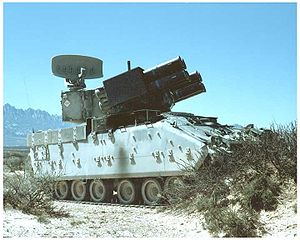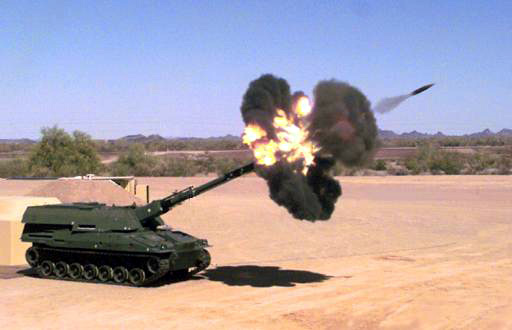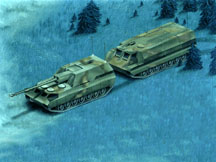Quick Description: The CPI-300 is a lightweight combat helmet with integrated communications suite in accordance to network-centric warfare, designed to avoid restricting the field of view of soldiers and to be comfortably wore, offering a similar level of protection to a flak vest in accordance to a view that mobility, stealth and information are always better ways of survival than relying on bulky armors, while also protecting against sonic psychological weapons like the "Banana" missile, with limited anti-thermal and flame-retardant capabilities and capable of limited shielding against alpha rays.
Specifications
Weight: 780g
Protection Class: Flak, Type I
Build: Variable thickness ArmoQuepis polyethylene fiber, Nomex, polycarbonate bullet-resistant glass, paper
Average thickness: 4.3mm
Electronics:
- MTI Ultralite Datalink and two-way radio
- Removable balanced armature monoaural earphone and stereo canalphones
- Removable carbon microphone
- 10 MB compact, high-reliability virtual storage drive
- 50 MHz i386 Quantix-Z Processor
- 1 MB RAM memory
Cost: $2,000
History
The Confederacy old-school "military", if it could be called one back then, was experienced with fighting without no protection at all besides the element of surprise, advantageous terrain, guerrilla warfare tactics and mobility, as all of the majors and experienced soldiers among its forces have been originated from guerrillas and irregular military forces. The transition to a regular military force has brought the need of body armor. However, with their habits being passed to newer members, the military forces of the Confederacy have been used for a long time to sacrifice protection for mobility, considering body armors "futile" as they couldn't offer any effective protection against many modern assault and battle rifle rounds. Soon lightweight Class II and Class I concealed Kevlar vests over uniforms became favored rather than full body armors, specially among special forces, and many simply wore no helmets, but instead caps or nothing at all. The cost of an human life is not to be understated. For the full training of a soldier capable of assuming or volunteering himself to a position of command at any time if their peers wish him for it is much beyond the costs that a full protection would offer, specially due to the elitist nature of the Confederacy infantry forces which make little more than 0.05% of the entire local population, as a fully professional military. Something had to be designed to attend to the needs of this unique military.
Then in a fateful Sunday in the year of 2027, a group of infantrymen on vacation were discussing about body armors in an EDDNet message board, and strangely, from such discussion the concept of a new, lightweight, modular infantry protection. Thus the Chaleco Antibalas and the Casco de Protección y Información from the Protección de Infantería Leve modelo 300(PIL-300), were originated, among several other modular protection components of protection which were chosen over a full body armor, still maintaining the principle that the best protection is mobility, terrain and surprise, and more than ever, something which has changed the fate of many battles: Information, a major consideration in the design of this system, thus the name of the helmet translates literally as "Protection and Information Helmet".
Description
The CPI-300 role regarding protection is not to protect against direct bullets, but for the same role of a flak vest and a personal protective equipment in situations with high decibels of sound or of high heat and flammable materials. After some tests, none of the existing synthetic fibers have been able of offering the needed protection:mass efficiency for the demands of an helmet that should not weigh more than 800 grams. Although Dyneema already offered about 40% of improved efficiency over aramids, it was considered not sufficient, or maybe some people were looking for an pretext to grab funds of the MilNet through research, as a new project started in parallel, to create a new synthetic fabric derived from ultra high molecular weight polyethylene(UHMWP) fiber. Thus the ArmoQuepis was born. Literally designed to be applied in the construction of kepis, it also became standard in Third Spanish States for all body armors. It is basically a less dense fiber similar to Dyneema, at about 0.78 g/l(~50% more efficient than aramids), but which offers the same protection capabilities of it through a combination of complex kinetics calculations done to optimize its tensile strength and deflective capability, and which when applied in variable thickness, allows the possibility of projectiles being deflected more effectively from vital points in human body, giving origin to the concept of "lethality reduction".
Applied in a distributed way, the fabric used in the CPI-300 combat helmet is sloped in a manner which might seem morbid in certain ways. Although it is not thick enough to stop a bullet, following many ballistics tests to determine the exact points where to add thicker layers, variable thickness was applied to points of trajectory leading to the most vital parts of the human brain, to provoke minor alterations in estimated ballistic trajectories intended to reduce the lethality of an headshot on an wounded soldier by trailing a projectile towards the "path of least resistance" to its kinetic impact located at less critical points of the head, rather than to avoid the bullet from penetrating. It also has a layer of 1mm thick paper, which actually offers protection against alpha rays, making it independent from CBRN suits
The CPI-300 is shaped in a similar way to the SPECTRA Helmet, with the difference the covered region which would otherwise block the field of view of a soldier is covered by an unique combination of ArmoQuepis within a layer of 5mm thick laminated polycarbonate, giving its peculiar appearance of a transparent layer to the forehead just above the eyes, while it also contains support for fitting an additional similar layer to the eyes, although it is not usually recommended for although designed to not break inwards, it could actually be more noxious than no protection at all in such region. However, future plans to expand visual information to datalinks in the form of ultra-compact heads-up displays were taken into account to allow for it this specific addition, although nothing groundbreaking enough is expected to allow such degree of information awareness in the next 25 years.
It also logically includes helmet covers to allow a single helmet to be fielded with different camouflages, and comes into four different sizes for specific head diameters, while being strapped to the head in a similar manner to the MICH TC-2000. The main difference however are its retractable and removable canalphones, which were devised in a glance to the future threat of sonic weapons, and also function as additional communications receiving devices, besides the standard left earphone, automatically disable when the larger earphones are inserted, which does not block the entrance of sound to the left ear. Another mobile and also removable piece is the compact carbon microphone it can be fielded with, chosen for its resistance to electromagnetic pulses, which allows soldiers to directly communicate among themselves without need of the still used, as emergency, radios, which would force a trooper to lower his weapon to use them.
Electronics-wise, in accordance to the mentioned doctrines, it is a fact that a helmet does not offer too much space for issuing complex devices, and that sensitive equipments could be knocked out easily by mere concussion. To reduce costs, its hardware relies on the tried and tested two-way radio datalink for communications, featuring a compact transmitter/receiver unit and an accessible storage drive with little more than a cryptographic key, which are connected to both the microphone and the earphones. The entire region of the helmet where such in-bound components are installed is covered by a combination of ArmoQuepis with Nomex built to reduce the perceived impact on its electronics, at the expense of offering even more limited ballistic protection than the rest of the helmet, although its location was strategically placed to ensure, should enemy forces be aware of its vulnerability, that most possible ballistic trajectories would not hit vital regions of the brain.
It is entirely compatible with the Low Probability of Intercept datalink used by Third Spanish States armored vehicles, vessels and aircrafts, thus giving an excellent information awareness to all soldiers and the possibility of instantaneous receiving of situational updates, and it can also be made compatible with datalink technologies of other nations. The same principle of transmitting an encrypted message to an wide area rather than to an specific point can be applied as well to difficult the detection of the exact position of the receiver, although the simple transmitter of the helmet doesn't support such feature capable of difficulting SIGInt tracing, and nonetheless, whenever such systems are used a soldier will inevitably trade the stealth of all involved parts in the communication for increased awareness of the battlefield.









